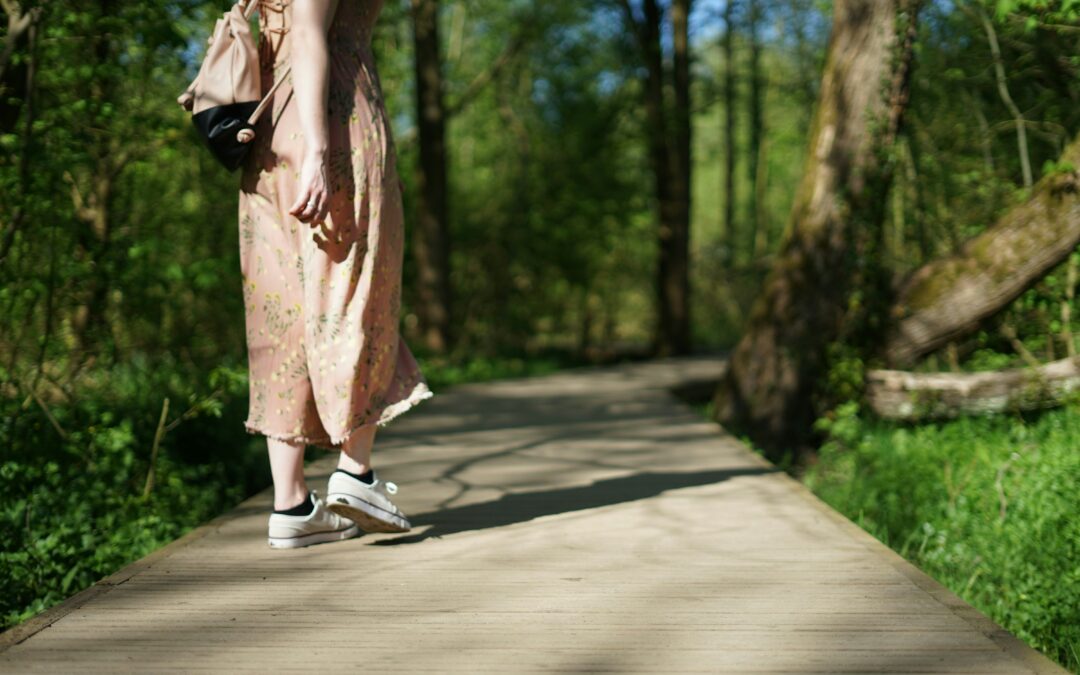In today’s fast-paced world, where stress and anxiety seem to be constant companions, finding effective ways to unwind and take care of our mental health is essential. While traditional forms of therapy like talk therapy and medication have their merits, a simple and accessible alternative has been gaining momentum: walk therapy.
What is walk therapy?
As the name suggests, walk therapy involves taking therapeutic sessions outdoors in natural surroundings, such as parks, forests, or along scenic trails. During these sessions, the client and therapist walk side by side, engaging in meaningful conversations. This approach combines the physical benefits of exercise with the mental and emotional advantages of being in nature, creating a more holistic approach to well-being.
Benefits of walk therapy
One of the primary advantages of walk therapy is its accessibility. Unlike traditional therapy, which often takes place in an office setting, walk therapy can be done anywhere there are outdoor spaces to explore. This makes it a flexible option for those with busy schedules or those who may feel uncomfortable in a traditional therapy setting. Also, the act of walking side by side with a therapist fosters a sense of equality and enhances the therapeutic alliance, leading to more open and honest communication.
Moreover, research has shown that spending time in nature can have a profound impact on mental health. Nature has a calming effect on the mind, enhancing sleep quality, and reducing feelings of stress and anxiety.
Additionally, the physical activity involved in walking releases endorphins, which are natural mood lifters, further enhancing the therapeutic effects of walk therapy.
Another advantage of walk therapy is its ability to foster introspection and mindfulness. Walking allows individuals to slow down, tune into their surroundings, and connect with their inner thoughts and feelings. This can lead to greater self-awareness and insight, helping individuals gain perspective on their problems and challenges.
Furthermore, walk & talk therapy can be particularly beneficial for those struggling with depression and ADHD. Studies have shown that regular physical activity, such as walking, can be as effective as medication in alleviating symptoms of depression and improves focus, reduces hyperactivity, and helps with sensory regulation.
In conclusion, walk therapy offers a simple yet powerful way to support mental health and well-being. By combining the physical activity of walking with the restorative effects of nature, walk therapy provides an innovative approach that is accessible, effective, and enjoyable improving your overall well-being. So lace up your shoes, step outside, and take a walk towards better mental health with me =)
Greetings,
Annelies
References:
1. Bratman, G. N., Hamilton, J. P., & Daily, G. C. (2012). The impacts of nature experience on human cognitive function and mental health. Annals of the New York Academy of Sciences, 1249(1), 118-136.
2. Cooney, G. M., Dwan, K., Greig, C. A., Lawlor, D. A., Rimer, J., Waugh, F. R., … & Mead, G. E. (2013). Exercise for depression. Cochrane Database of Systematic Reviews, 9.
3. Hansen, M. M., Jones, R., & Tocchini, K. (2017). Shinrin-Yoku (forest bathing) and nature therapy: A state-of-the-art review. International journal of environmental research and public health, 14(8), 851.
4. Pontifex, M. B., Saliba, B. J., Raine, L. B., Picchietti, D. L., & Hillman, C. H. (2013). Exercise improves behavioral, neurocognitive, and scholastic performance in children with attention-deficit/hyperactivity disorder. Journal of Attention Disorders, 17(4), 324-334.
5. Agents of Change Prep. (n.d.). What is walk-and-talk therapy? Agents of Change Prep. Retrieved May 21, 2024, from https://agentsofchangeprep.com/blog/what-is-walk-and-talk-therapy/

